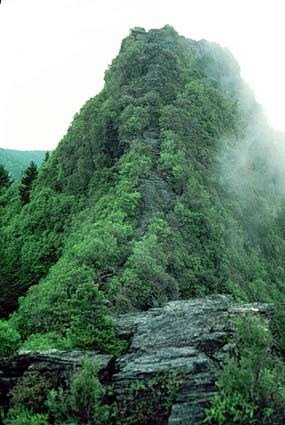Welcome to this fascinating article on the history of the Smoky Mountains! The Smoky Mountains have been standing tall for an incredible 200-300 million years. That’s right, these majestic mountains have been around long before humans even existed! It’s amazing to think about the ancient history and geology that has shaped this beautiful natural wonder. So sit back, relax, and let’s delve into the intriguing history of the Smoky Mountains together. How Long Have The Smoky Mountains Been Around?
Have you ever wondered about the history of the Smoky Mountains and how long they have been around? In this article, we will explore the geological timeline of the Great Smoky Mountains and uncover the fascinating story behind this ancient mountain range.
Formation of the Smoky Mountains
The Smoky Mountains are part of the larger Appalachian Mountain range, which extends from Canada all the way down to Alabama. The mountains were formed over millions of years as a result of tectonic plate movements and volcanic activity.
Tectonic Plate Movements
About 250 million years ago, the continents of North America, Africa, and Europe were all connected as part of the supercontinent called Pangaea. As Pangaea began to break apart, the North American plate shifted to the west, causing the land to buckle and fold, forming the Appalachian Mountain range.
Volcanic Activity
During the formation of the Appalachian Mountains, there were periods of volcanic activity that contributed to the rugged terrain we see today in the Smoky Mountains. Molten rock forced its way to the surface, creating lava flows and volcanic eruptions that added layers of rock to the mountains.

This image is property of tnmuseum.org.
Age of the Smoky Mountains
The age of the Smoky Mountains is estimated to be around 200-300 million years old, making them one of the oldest mountain ranges in the world. The erosion of the mountains over millions of years has shaped the landscape we see today, with its rolling hills, deep valleys, and towering peaks.
Erosion and Weathering
Erosion is a natural process that wears down and reshapes the Earth’s surface over time. In the case of the Smoky Mountains, the forces of wind, water, and ice have played a significant role in sculpting the mountains into their current form. Weathering from rain and snowmelt has also contributed to the gradual breakdown of rocks and minerals, creating the characteristic color and texture of the Smokies.

This image is property of upload.wikimedia.org.
Biodiversity of the Smoky Mountains
The Great Smoky Mountains National Park is known for its incredible biodiversity, with thousands of plant and animal species thriving in its diverse ecosystems. The unique geology and climate of the Smokies provide a rich environment for a wide range of flora and fauna.
Plant Life
The Smoky Mountains are home to a variety of plant species, including iconic trees such as Eastern Hemlock, American Chestnut, and Red Maple. The park boasts over 1,500 species of flowering plants, making it one of the most botanically diverse areas in North America. From wildflowers to towering old-growth forests, the Smokies are a paradise for plant enthusiasts.
Animal Kingdom
The Smoky Mountains are teeming with wildlife, from black bears and white-tailed deer to salamanders and elk. Birdwatchers flock to the park to catch a glimpse of over 200 bird species that call the Smokies home. The rich biodiversity of the area is a testament to the preservation efforts of the National Park Service and the dedication of conservationists to protect this natural treasure.

This image is property of i.natgeofe.com.
Human History in the Smoky Mountains
Long before the Great Smoky Mountains became a national park, indigenous peoples inhabited the region and left their mark on the land. The history of human presence in the Smokies dates back thousands of years and includes Native American tribes, European settlers, and pioneers who made the mountains their home.
Native Americans
The Cherokee and other indigenous tribes have a deep connection to the Smoky Mountains, with a rich cultural heritage that spans centuries. The Cherokee Nation historically lived in the region and relied on the natural resources of the mountains for sustenance and spiritual renewal. Today, the legacy of the Cherokee people is honored through various cultural programs and preservation efforts in the park.
European Settlement
During the 18th and 19th centuries, European settlers began to move into the Smoky Mountains, establishing homesteads and communities in the rugged terrain. The early settlers relied on farming, forestry, and mining as primary sources of livelihood, shaping the landscape and culture of the region. Old cabins, churches, and homesteads can still be found throughout the park, providing a glimpse into the past way of life in the Smokies.
Creation of the National Park
The Great Smoky Mountains National Park was established in 1934 as a joint effort between the states of North Carolina and Tennessee to preserve the natural beauty and resources of the area. Today, the park is one of the most visited national parks in the United States, attracting millions of visitors each year to explore its trails, waterfalls, and scenic overlooks. The preservation of the Smokies ensures that future generations can continue to enjoy and learn from this unique mountain ecosystem.

This image is property of www.nps.gov.
The Future of the Smoky Mountains
As we look ahead to the future of the Great Smoky Mountains, conservation and preservation efforts are crucial to maintaining the integrity of this remarkable wilderness area. Climate change, invasive species, and human impact pose significant challenges to the ecosystem of the Smokies, requiring ongoing stewardship and protection.
Conservation Initiatives
The National Park Service, along with various conservation organizations and community partners, are actively working to protect the biodiversity and natural resources of the Smoky Mountains. Through habitat restoration projects, wildlife monitoring, and sustainable land management practices, efforts are made to ensure the long-term health and vitality of the park.
Education and Outreach
Educating the public about the importance of conservation and environmental stewardship is a key component of preserving the Smoky Mountains for future generations. Interpretive programs, guided hikes, and outreach events help visitors connect with the natural world and understand the significance of protecting this fragile ecosystem. By fostering a sense of appreciation and respect for the Smokies, we can inspire a shared commitment to its preservation.
Your Role in Preserving the Smokies
As a visitor to the Great Smoky Mountains, you play a vital role in preserving the natural beauty and cultural heritage of this iconic mountain range. By practicing Leave No Trace principles, staying on designated trails, and respecting park regulations, you can help minimize your impact on the environment and wildlife. Remember to pack out your trash, avoid feeding wildlife, and be a responsible steward of the Smokies for generations to come.
In conclusion, the Smoky Mountains have a rich geological history that spans millions of years, shaping the landscape and ecosystems we see today. From the formation of the mountains to the cultural heritage of indigenous peoples and early settlers, the Smokies offer a glimpse into the past and a vision for the future of conservation and sustainability. By exploring the natural wonders of the Great Smoky Mountains National Park and learning about its history, we can gain a deeper appreciation for this ancient mountain range and the importance of protecting it for future generations.

This image is property of tnmuseum.org.

